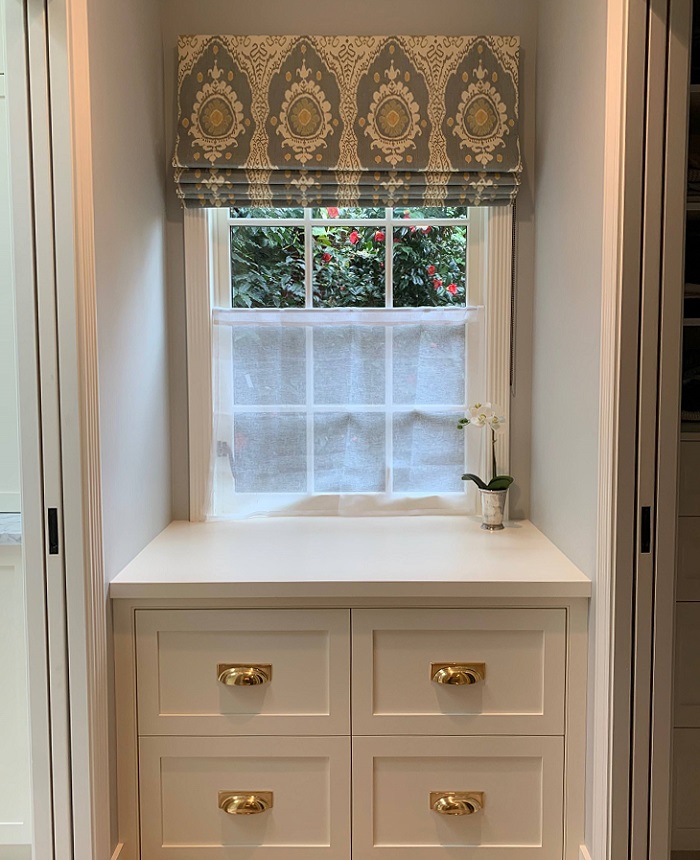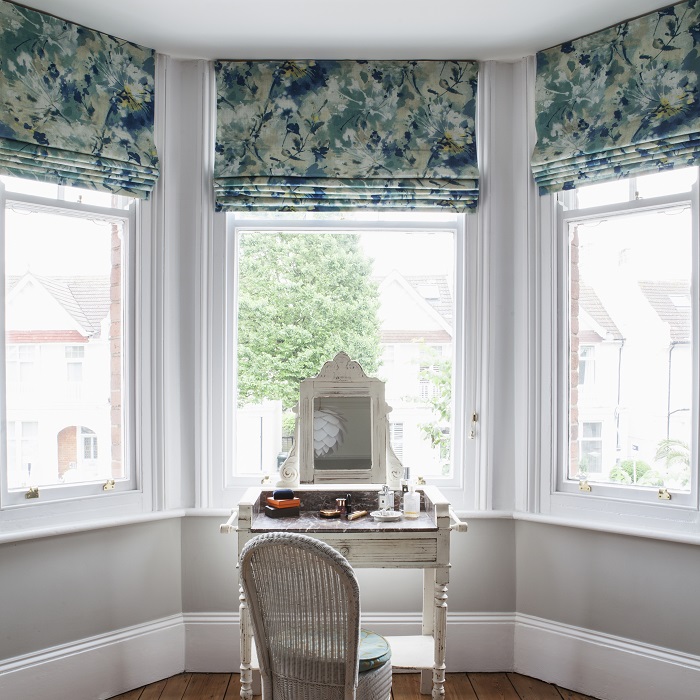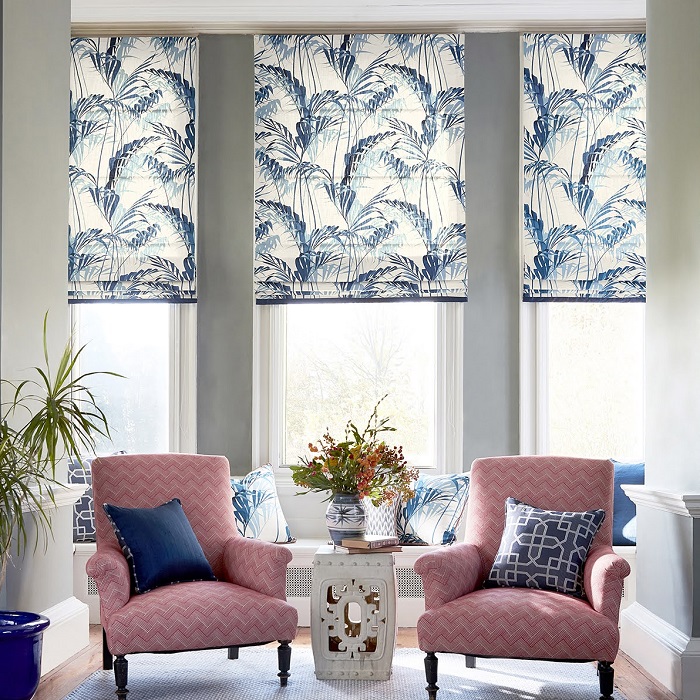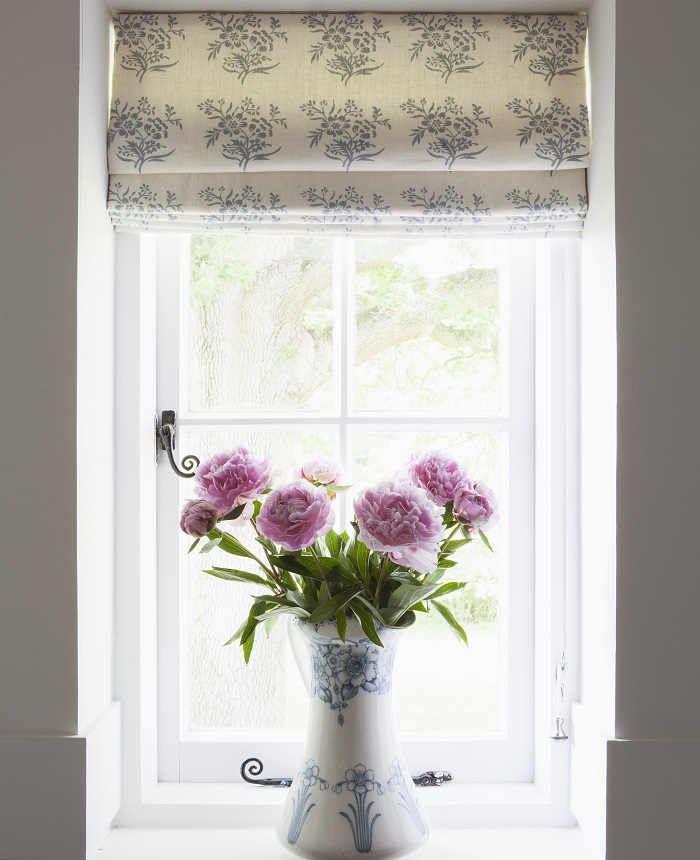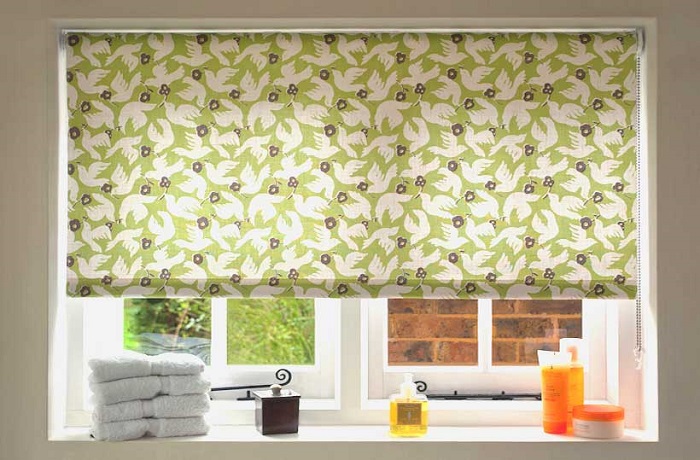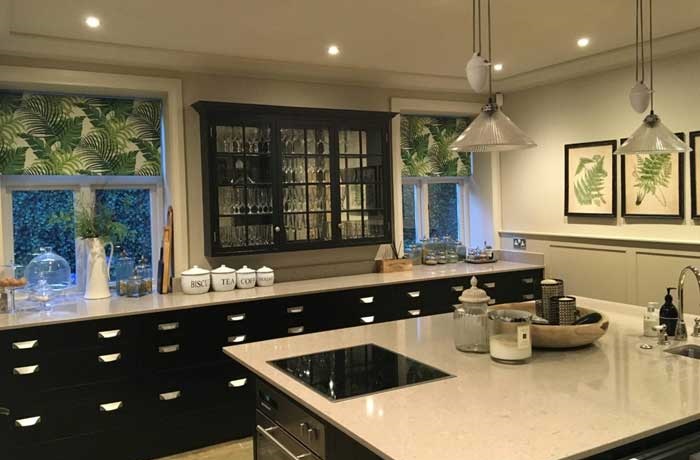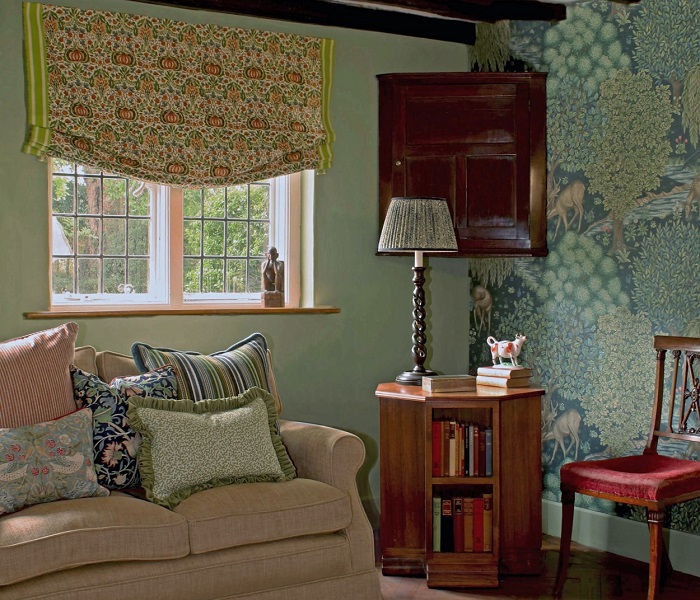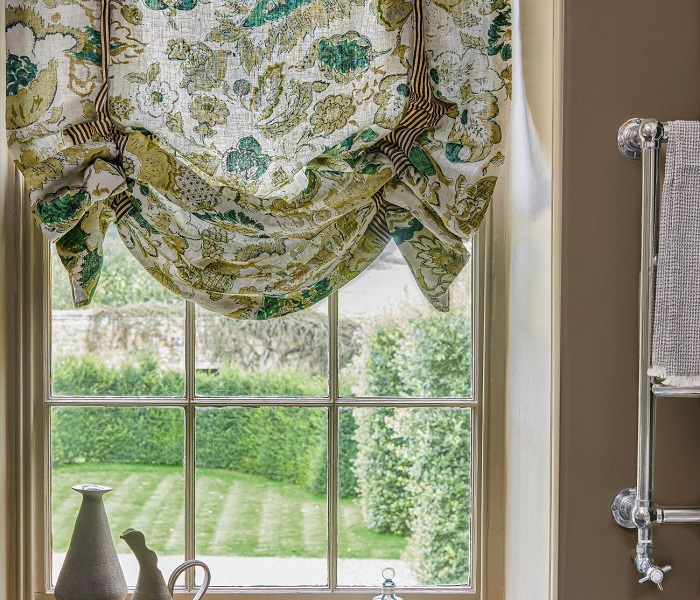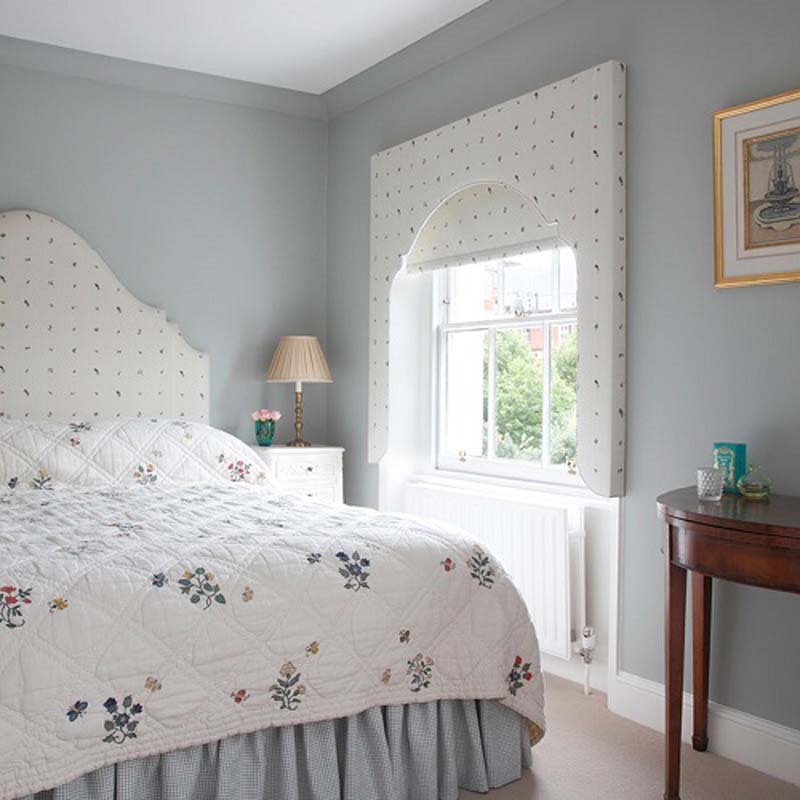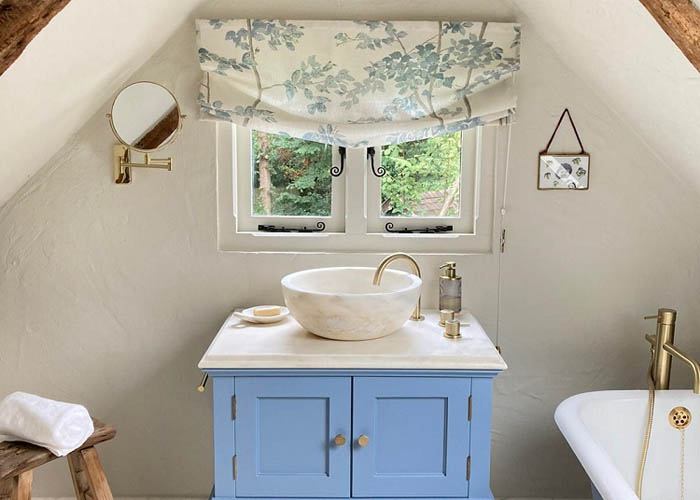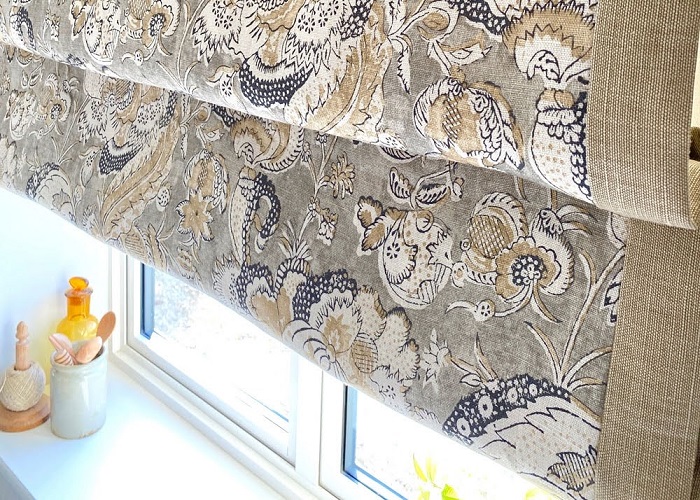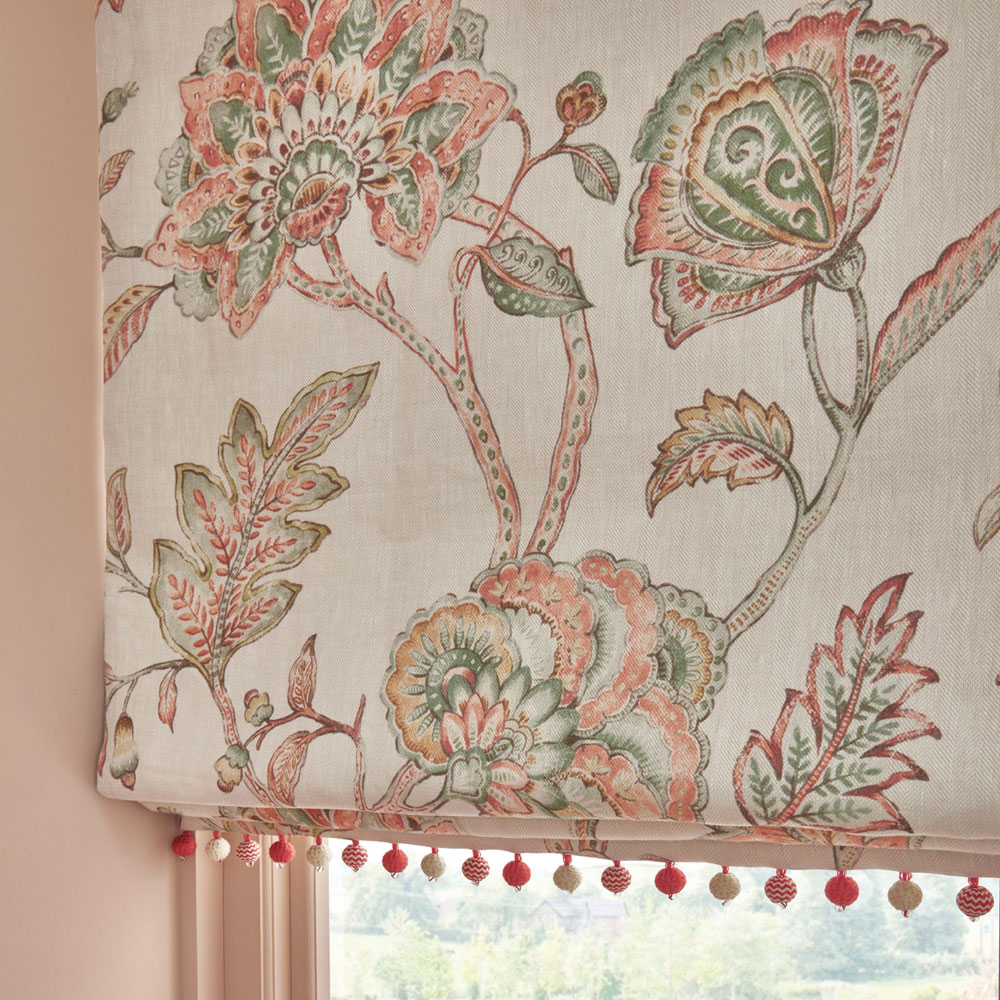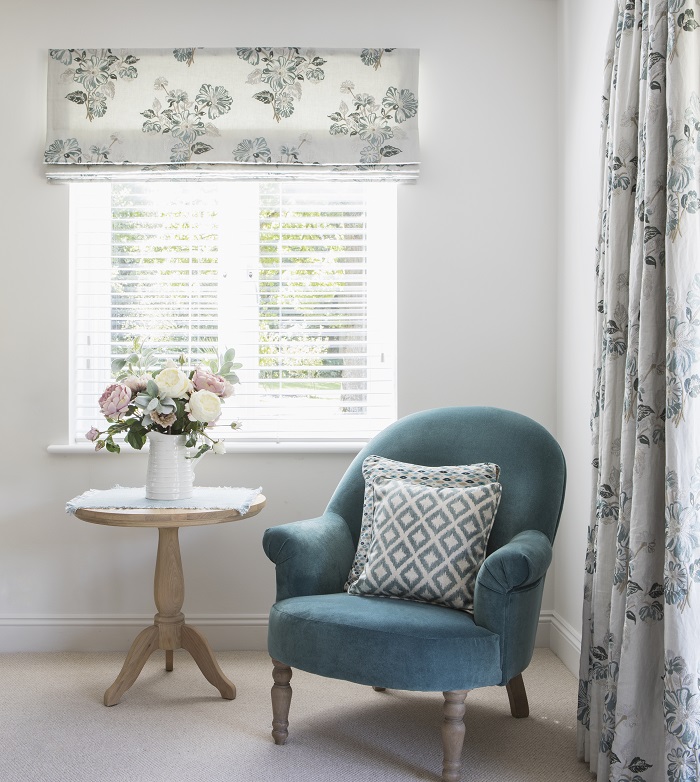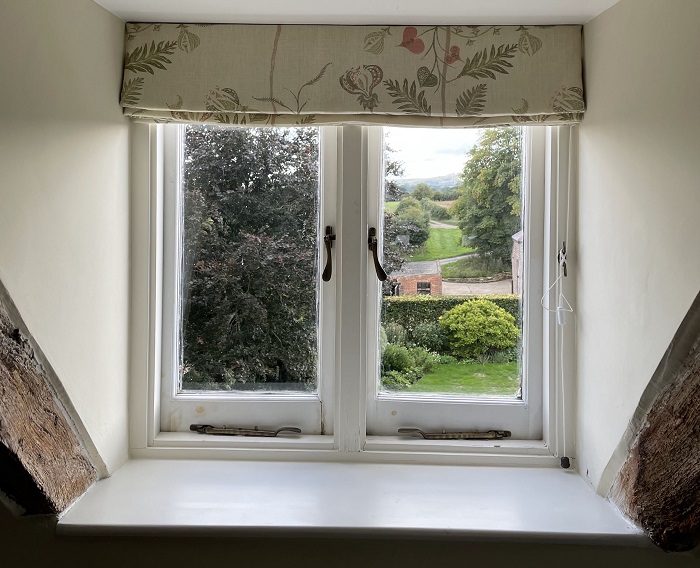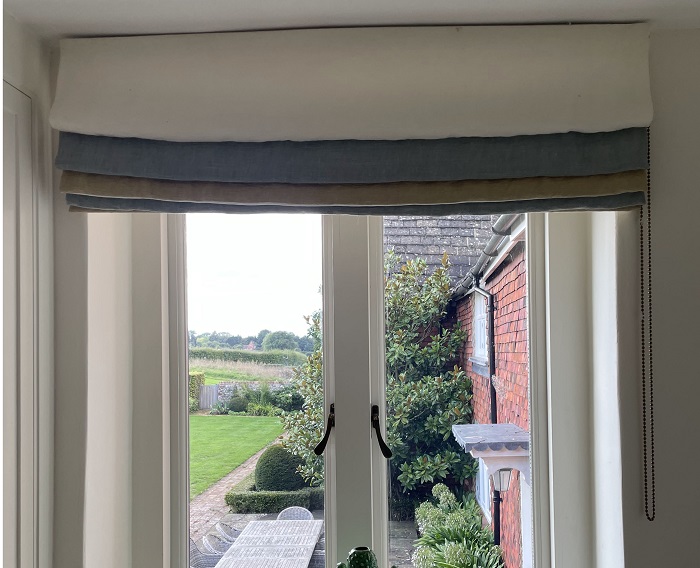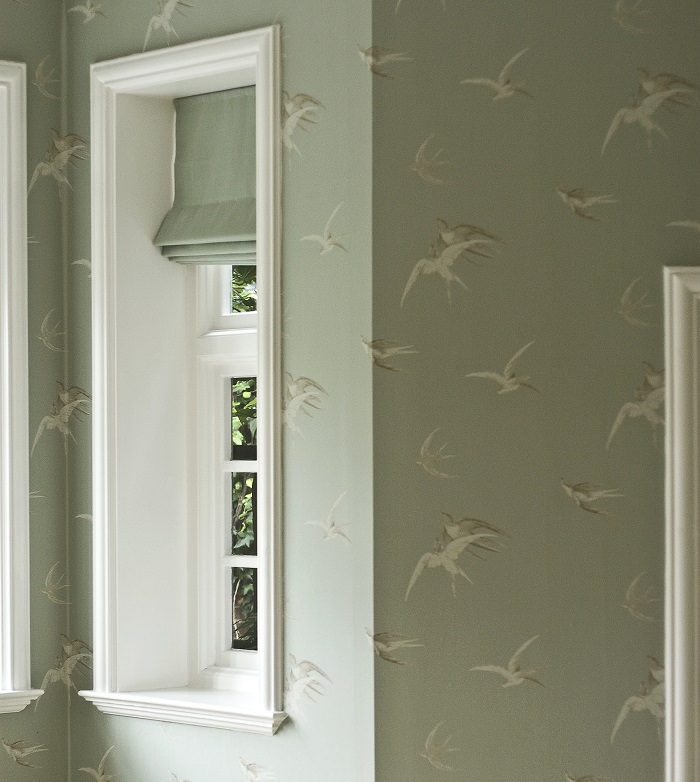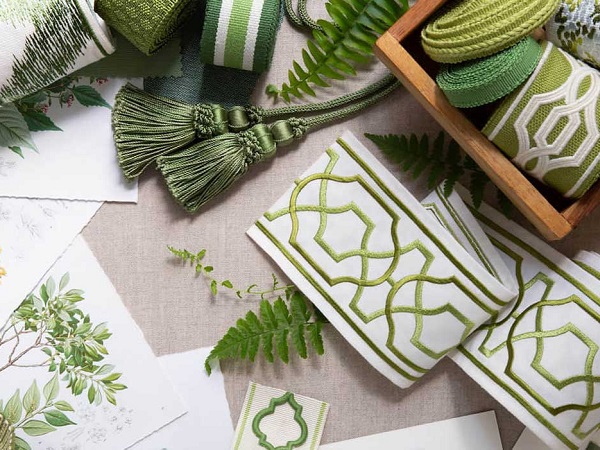There are many types and styles of window blinds you can use in your interiors. From Roman Blinds to Roller Blinds; each design offers a way to add beauty to your room as well as feature many practical elements. The F&P Interiors design team have put together a handy style guide featuring expert design tips so you can choose the perfect window blind for your home.
Our Expert Tips on Choosing Your Window Blinds:
Roman Blinds
Roman Blinds have been a design staple at F&P Interiors since we began in 2000, they can be made in pretty much any fabric, making them very versatile and a great way to add detail to your room without the need for tens of metres of fabric. Typically we make these blinds as a stacked finish which you can see in the four images below. Handmade on either a track with sidewinder or fabric covered baton and pulley system, both come with child safety fittings making them an ideal choice for a family home.
Blackout lining can be added to help minimise light and a great option for using in bedrooms and children’s nurseries. In contrast, you can have the blinds made unlined which offers a softer look and allows some light to still enter your room.
Jasmine, Bespoke Manager, says:
"I personally love the fuller look of an interlined Roman blind, it gives the folds some volume and body - this will also help with drafts."
Roller Blind
Roller blinds are a popular choice for kitchens and bathrooms or for a simpler finish to your window dressing.
To make a Roller blind the fabric has to go through a lamination process, meaning velvets and most embroideries are unsuitable. Printed linens and colourful childrens prints are a popular fabric choice and you can add trimmings to the hem of roller blinds for added interest.
As standard we make Roller blinds that are reverse rolled, meaning you don’t see the back of the fabric, an important little detail for creating a luxury finish to your blind.
Relaxed Blinds
Relaxed blinds or London blinds as they are also called, have become a popular window dressing style. This look allows for a softer finish to your window, with a slight swag to the hem of your blind. With London blinds, the cords are inset which creates the tail detail on either side.
Particularly well suited to cottage and country interiors, relaxed blinds look great in linens, cottons and lightweight wools and also work well being made unlined, a great styling choice for keeping your room light and fresh.
Design Extras
There are many extra details that can be added to a bespoke blind that will elevate it’s design whilst also creating a truly unique addition for your home interior.
You can’t go wrong when adding trimming to your blind, these can be added to the hem on Roller and Roman blinds or run vertically up the blind on both Relaxed or Roman blinds. When it comes to choosing which one of our lovely trimmings to use, you may be spoilt for choice but our design team will be on hand to help with those all important decisions.
Another detail is adding a contrast edging, this is also a very practical tool if your window measure is just wider than your chosen fabric, add a border to widen your blind if needed. A contrast edge works best on Roman blinds and can be used on all sides of a Relaxed blind on the top and sides.
Curtain pelmets have been a key trend for 2022 and we are now seeing requests for blind pelmets more and more. You can have a straight or shaped pelmet, all are handmade with your blind in either a matching or contrasting fabric. You can even add a trimming to you pelmet for extra pizzazz.
Fittings
When it comes to fitting your blinds there are some practical options to think about. Fitting inside the recess creates a smart, neat finish for your window dressing, this works particularly well in smaller spaces as they are less intrusive in the room. This is also ideal for high traffic areas and children’s rooms as the blinds will all be sitting tidily within their recess where dirty hands are less likely to reach them! Additionally, If you are wanting a blackout blind then fitting inside the recess would help with keeping the light out.
Fitting outside the recess might be your best option if you have a narrow recess or if your window opens inwards. Another benefit for fitting outside the recess is that you don’t have to allow for uneven walls, this is good for those charming, wonky cottage windows!
Blinds can be attached to the ceiling, to the window frame itself, to the face of the wall or as a recess fitting – our team will be happy to discuss the best fitting option for your window, you can upload an image of your window on the quote form or give us a call to discuss further.
At F&P Interiors we will always pattern match your blinds if you are having more than one in a room, in addition, large blinds that require more than one drop will have the design centered to ensure no seams run down the centre of your beautiful bespoke blind.
You May Also Enjoy Reading...
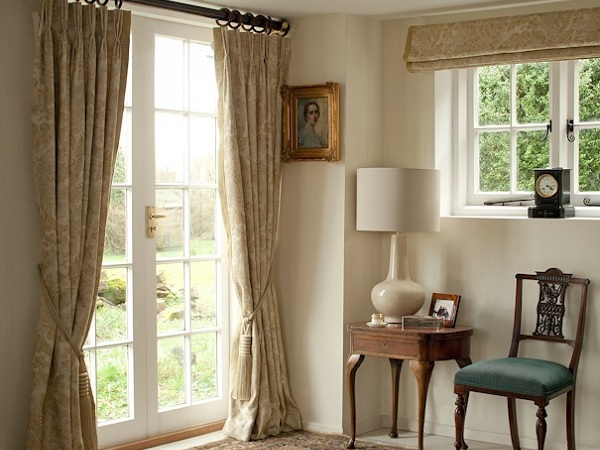

Ten Chic Roman Blind Ideas
Both stylish and practical making them the perfect window treatments for privacy, convenience, design appeal. Here's ten of our favourite roman blinds ideas to inspire your interiors.
- paypal
- visa
- mastercard
- amex

